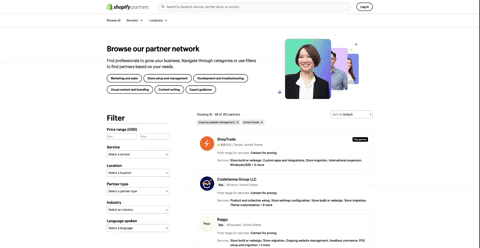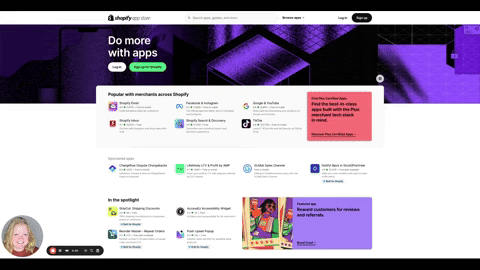Headaches of Ecommerce: Agency Selection, RFP’s, and Vendor Selection
What-to-do and Not-to-do | Insights from Industry-Leading Consultants
We believe consultants are the connective tissue of the e-commerce world, offering a unique perspective across multiple brands as they navigate shared and distinct challenges. They sit at the intersection of strategy and execution, making them experts in identifying what works - and what doesn’t - across the industry.
We asked some of the top consultants in our network to share insights on three of the biggest headaches ecommerce brands face: Agency Selection, RFP Generation, and Tech Vendor Selection. Here’s what we learned:
Agency Selection: Playbooks > Talent

The reality is, no one is great at everything all the time, which is why brands often turn to agencies for support—whether for a redesign, migration, or strategic overhaul. However, the agency selection process is rife with challenges. Here’s what to do- and what to avoid - when choosing the right agency for your business:
Prioritize alignment in team structures. It's easy to overlook, but understanding how teams are set up on both the agency and brand side is essential to building the right engagement. Ensuring team structure is aligned could help to prompt important internal conversations on the brand side. For example, if most agencies expect a Digital Project Manager on the brand side, but your team doesn’t have one, that might signal an internal gap to address.
I see that 4 of the 5 most common team types VAAN is asking to fit ourselves into having a Digital Project Manager on the brand side- is it weird that we don't have such a person?
Avoid getting blinded by individual talent. Many brands chase agencies based on star account leads, only to get burned when that person moves on. Andrew Faris puts it best:
The big mistake most people make when looking for agencies is that they don't actually know what they're looking for. They think they’re hiring ‘talent’, but not only is that almost impossible to vet, its impossible to depend on. What happens when your amazing account lead gets promoted or leaves? Performance dips, and you’re back to the drawing board.
Faris believes the real value lies in the agency’s playbook—the processes and methodologies that endure beyond any one person. Great agencies operate with clearly defined, stress-tested processes. Look for agencies that stick to their methodology, even when you're tempted to push for exceptions.
Every business is different" and "test everything" are the two worst, most misleading ideas that are repeated every day on Twitter and in other DTC/ecom communities. While it's technically true that every business is different, the implication people are using to draw from that advice is profoundly unhelpful.
Look for agencies with well-documented processes that align with your business goals and be willing to invest in their expertise. It’s not the talent of an individual but the strength of the agency’s methodology that will drive sustained results.
RFP Generation: A Roadmap for Clearer Expectations
All Request for Proposal (RFP) processes start out the same way with the goal of clearly defining a project’s requirements and inviting qualified vendors, agencies, or consultants to propose solutions. Yet this year especially, the end result of many of the RFP’s we have seen at VAAN only provide a partial picture,bogged down by unnecessary details, internal bias, or misaligned expectations.
Here’s what consultants recommend for creating effective RFPs:
- When it comes to Request for Proposal (RFP) processes, clarity and expectation-setting are paramount; each RFP should begin with a goals and outcome objectives section.
- Ecommerce RFP’s should include a section outlining who is responsible for what, for example: if the ERP will continue to be managed in house that should be clearly detailed
- Inviting brands to map their internal team structures against typical agency structures helps both sides design the right engagement model. This exercise can even spark important internal discussions—“If most agencies expect us to have a Digital Project Manager, are we missing a key role?”
- Remove bias- often RFP’s are issued even though the decision makers have already selected a vendor or have a strong preference. The RFP process is used merely for optics or to comply with procurement policies- that isn't going away. Consider challenging yourself to review submissions blindly- without bias by removing who responses have been received from to validate that the best vendor is indeed aligned with the initial desired direction.
- Leverage tools emerging in AI. As one consultant shared, “I’ve been using ChatGPT to streamline RFP creation. It’s a great way to consolidate feedback, reference past materials, and create clear, concise documents that are easy for an outsider to understand.”
Tech Vendor Selection: It’s More Than Just Price and Features

With over 13,000 Shopify apps and endless custom development options, the tech vendor landscape changes daily, making vendor selection a significant challenge.
Here’s what consultants recommend:
- While prices and features often dominate conversation around tech vendor selection, they shouldn’t be the only deciding factors. As one consultant noted, the ideal vendor is the result of an equation that balances price, features, vendor capabilities, internal brand capabilities, and the strength of the partnership between the brand and the implementation agency.
- Considering the position of the business on the other side of your selection is not to be overlooked. For example: no one wants to do a subscription migration so when evaluating a tech vendor to support subscription it is important to be cognizant of if that vendor will be around 6 months, a year from now- impossible to predict, but important to consider.
- Many brands overlook the importance of understanding a vendor’s long-term potential and how it aligns with their internal capabilities. Additionally, the brand-agency-vendor triangle plays a crucial role in determining success. Vendors that work seamlessly with your chosen agency can streamline workflows and ensure smoother implementations. When selecting tech vendors, prioritize partnerships and alignment alongside features and price. A vendor’s ability to collaborate effectively with both your internal team and your agency can be a game-changer. Assess responsiveness early. “I often know within one or two interactions what it's going to be like working with a vendor. Are they thorough? Responsive? Clear in their communication to both technical and non-technical stakeholders?"
Conclusion
In a rapidly evolving industry, the key to e-commerce success lies in aligning with the right partner whether that is an agency, vendor, or consultant who brings tested methodologies and clear processes to the table.
As these insights reveal, the path to smooth operations starts with clarity: well-structured RFPs, agencies with defined playbooks, and vendor partnerships that align with both your business capabilities and goals.
Brands that take the time to properly scope their needs, understand team structures, and prioritize strong partnerships will find themselves better positioned to thrive. In an industry full of complexity, simplicity and alignment may just be the ultimate keys to success.